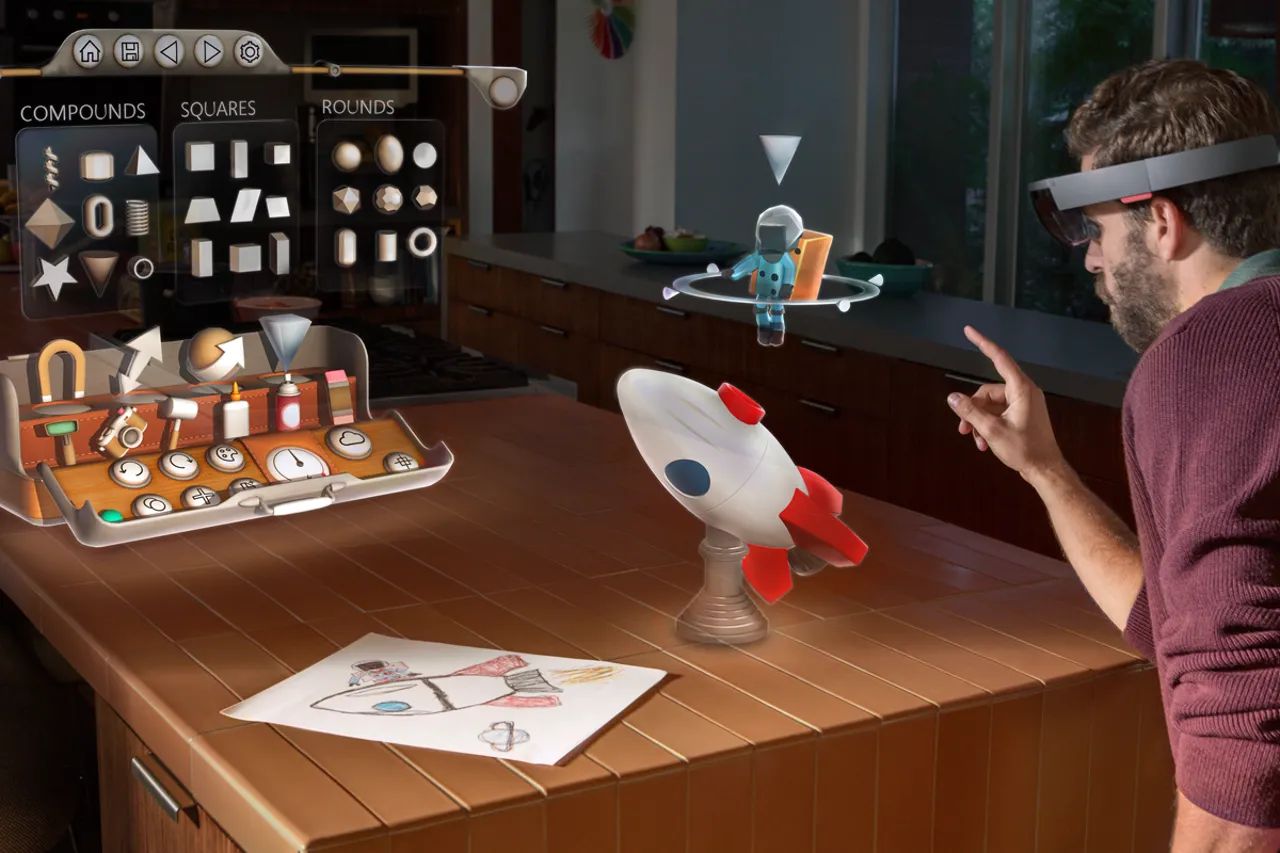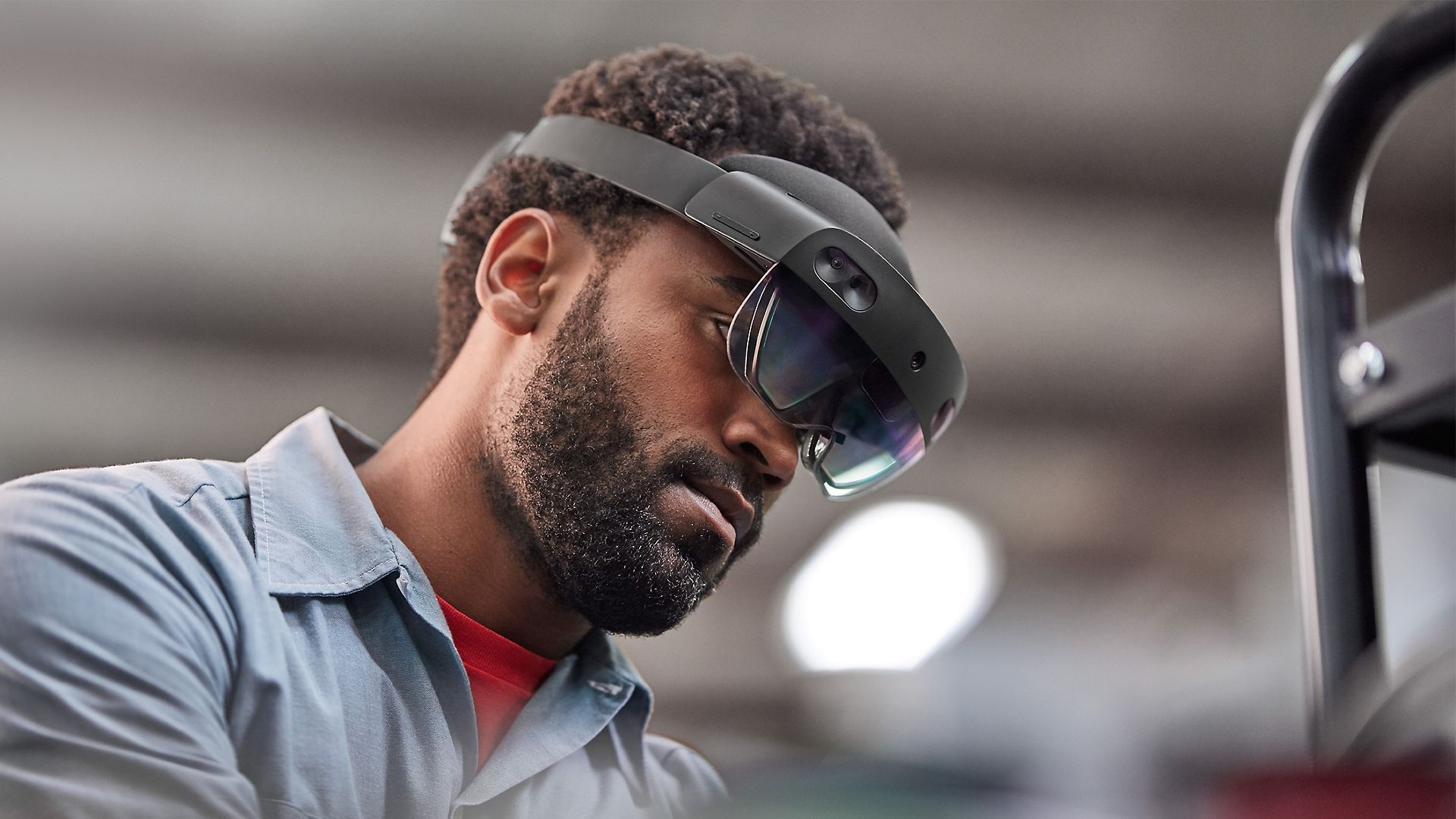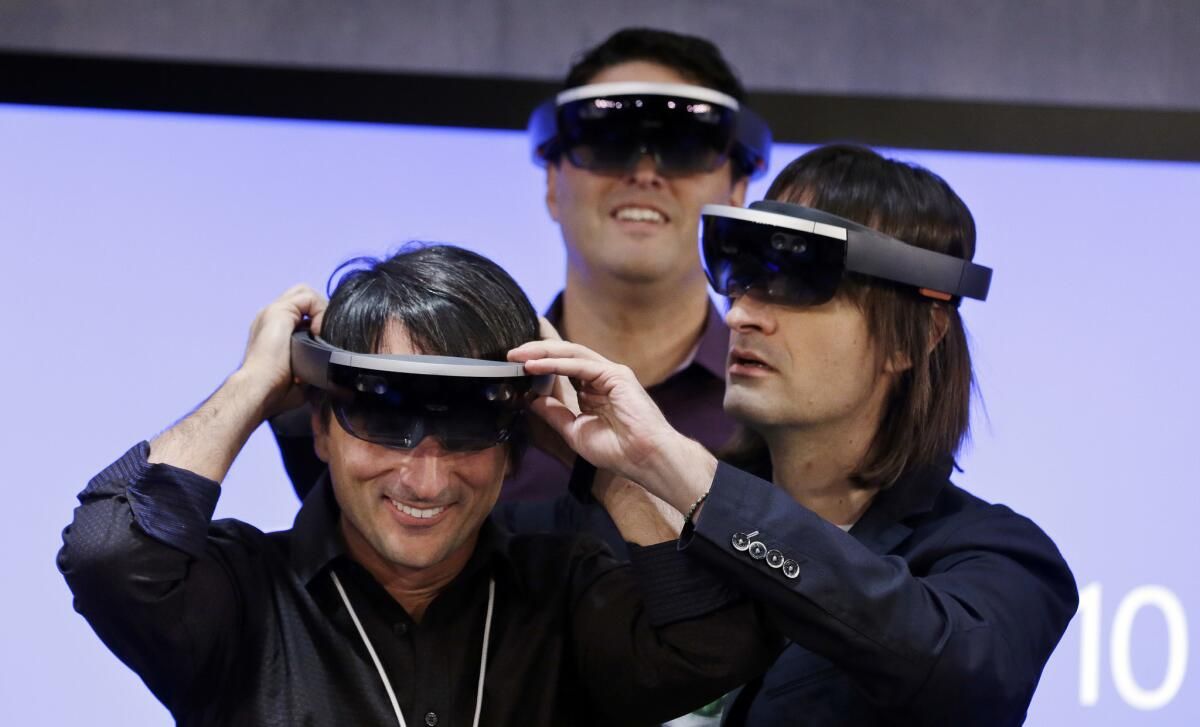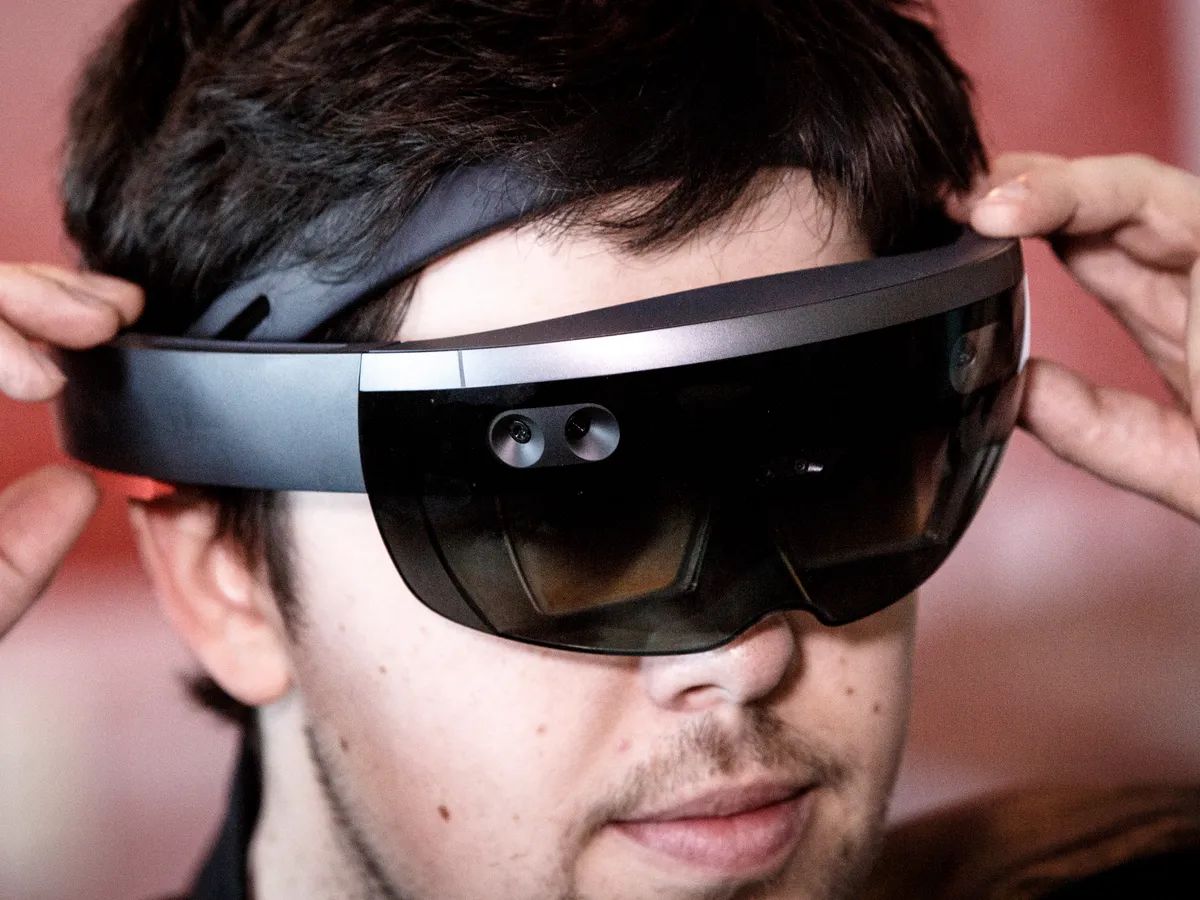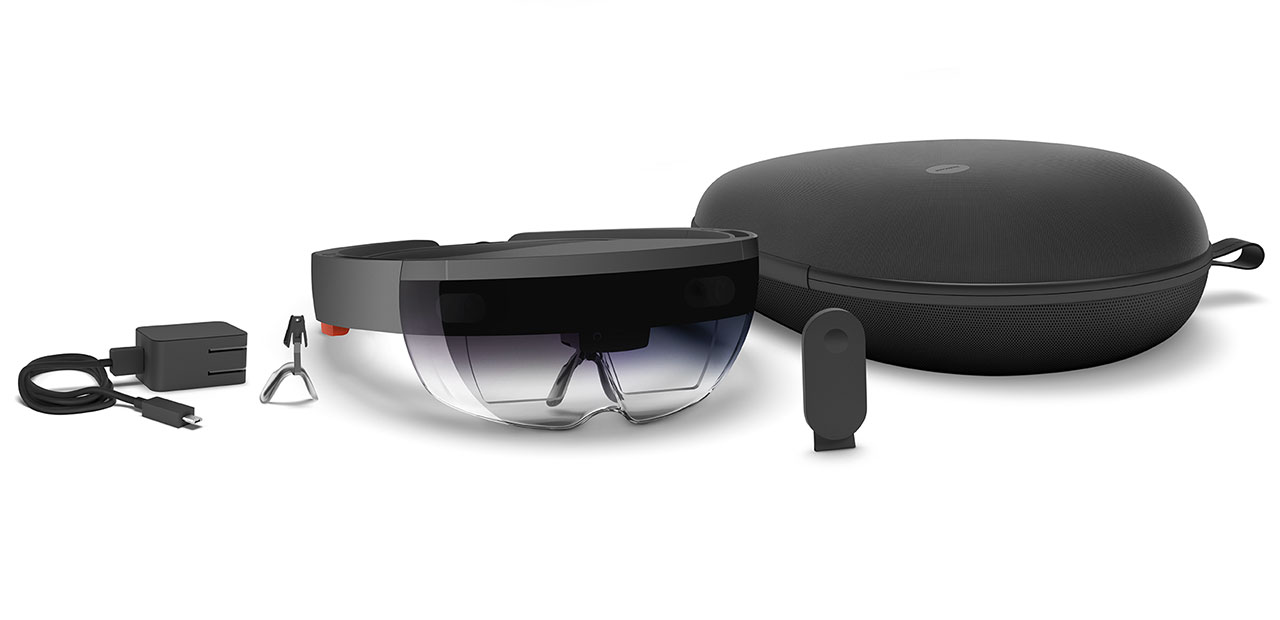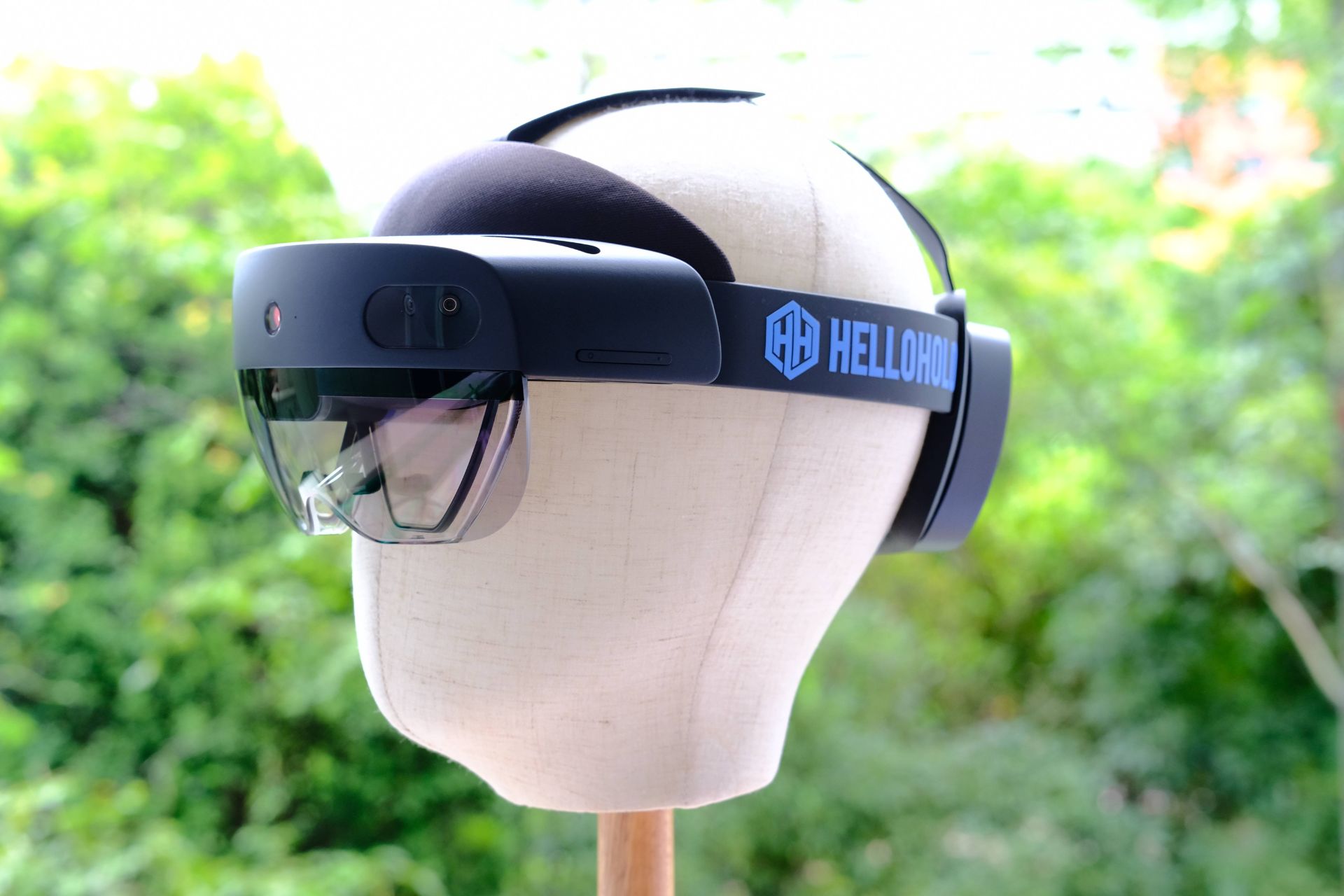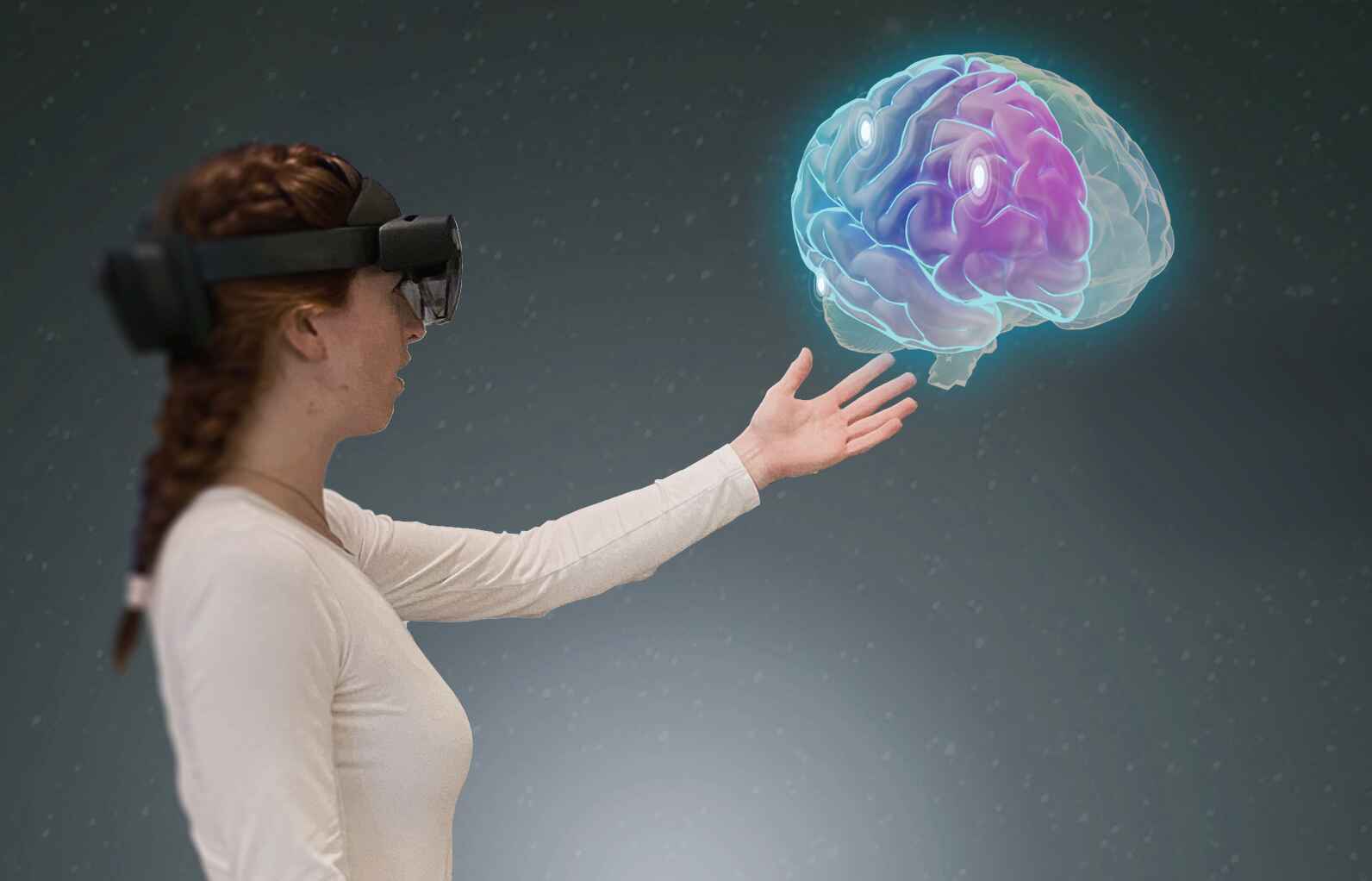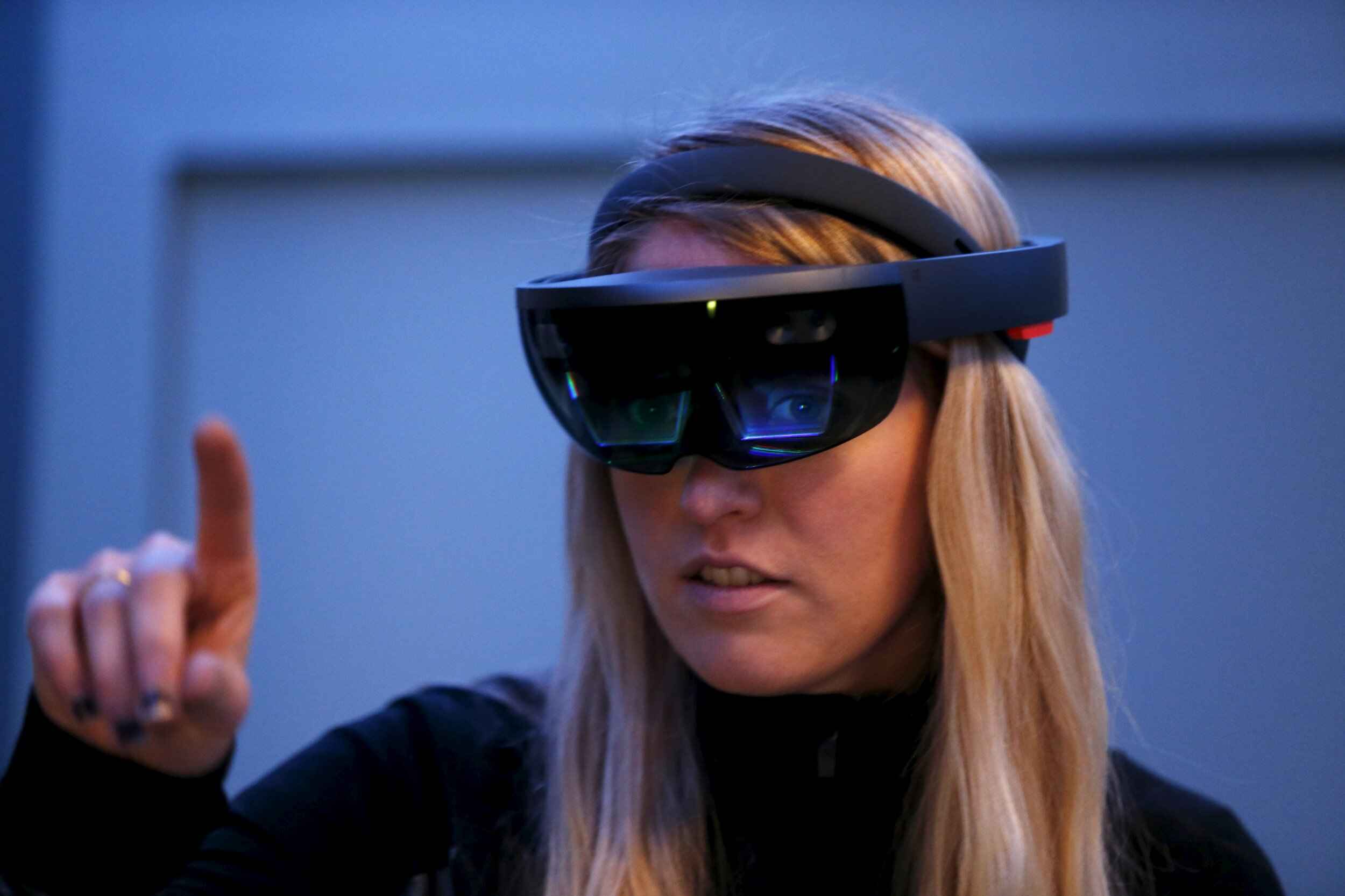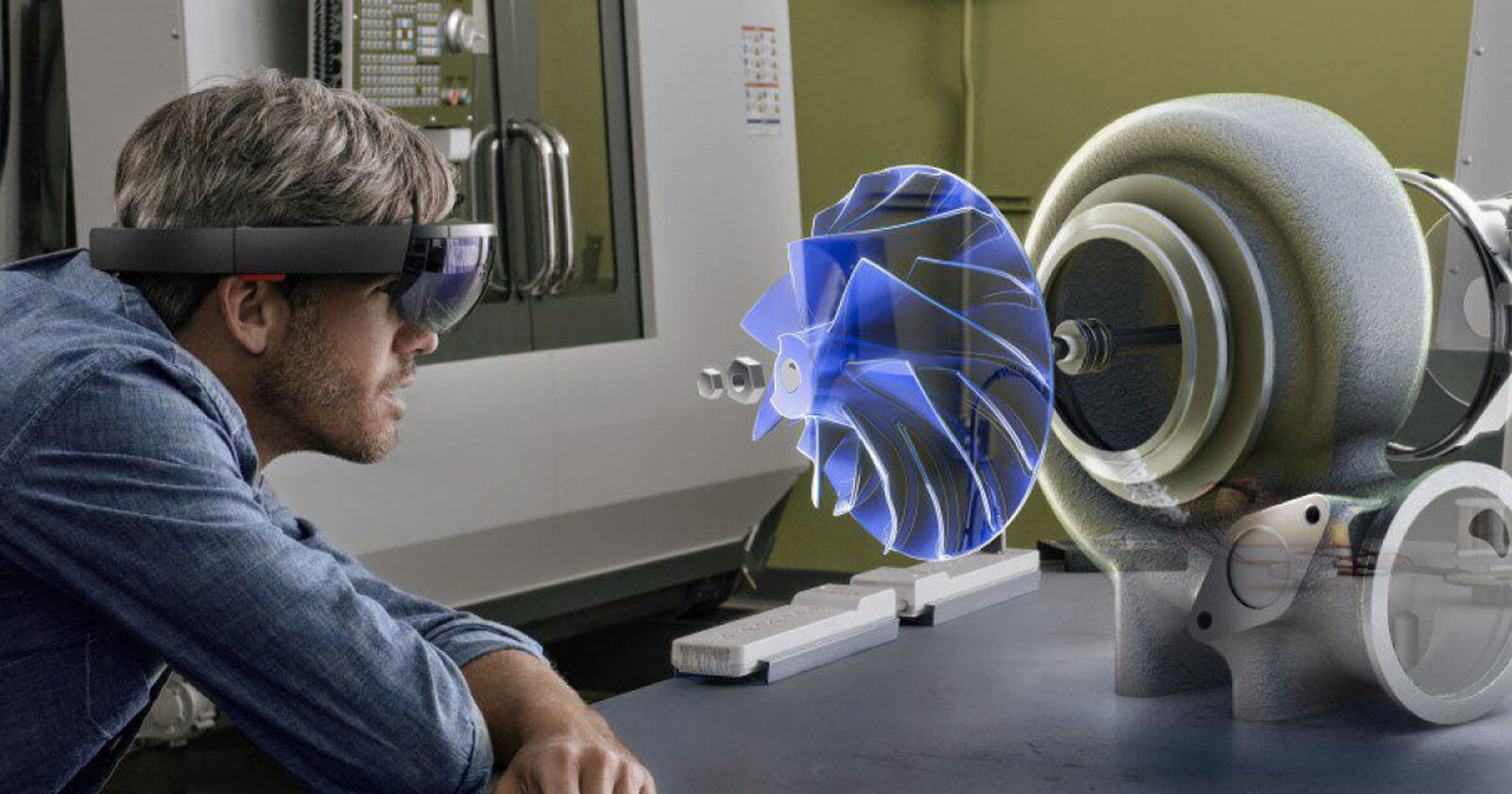Introduction
The Microsoft HoloLens is a cutting-edge augmented reality (AR) device that has gained significant recognition and adoption across various industries. This innovative technology has opened up new possibilities for businesses to enhance their operations, improve productivity, and deliver immersive experiences to their customers.
Augmented reality merges the physical and digital worlds by overlaying virtual content onto the real world, providing users with interactive and three-dimensional visualizations. The HoloLens, with its ability to track and map the user’s environment, allows for a seamless integration of virtual objects into the real world, creating an immersive and interactive experience.
Many forward-thinking businesses have embraced the Microsoft HoloLens and integrated it into their daily operations, unlocking its potential to revolutionize their industries. From healthcare to manufacturing, education to entertainment, the HoloLens is reshaping the way businesses operate, collaborate, and engage with their stakeholders.
In this article, we will explore various industries that are utilizing the Microsoft HoloLens and delve into how this remarkable device is transforming their processes and driving innovation.
Healthcare Industry
The healthcare industry has embraced the Microsoft HoloLens technology to revolutionize patient care, training, and surgery. With the HoloLens, medical professionals can access patient data, visualize medical scans in 3D, and collaborate with colleagues in real-time. This technology is particularly useful in complex surgeries, allowing surgeons to overlay virtual images onto the patient’s body, enhancing precision and reducing risks.
Furthermore, the HoloLens enables medical education and training to reach new heights. Students can study anatomy in detail through interactive 3D models projected onto the real world. Surgeons can also train using realistic simulations, honing their skills and improving patient outcomes.
Telemedicine has also benefited from the HoloLens. Doctors can conduct remote consultations and examinations by sharing their point of view with colleagues located in different locations. This capability has proven invaluable in situations where immediate specialist input is required, providing faster and more accurate diagnoses.
Overall, the HoloLens is transforming the healthcare industry by improving patient care, enhancing medical training, and enabling remote collaboration among medical professionals. It has great potential to revolutionize healthcare practices and provide better outcomes for patients worldwide.
Architecture and Construction Industry
The use of the Microsoft HoloLens in the architecture and construction industry has streamlined design processes, improved communication, and enhanced project visualization. Architects and designers can create virtual models of buildings and structures, allowing clients to experience them in a lifelike manner before construction even begins. This immersive experience helps clients make informed decisions and provides a more accurate representation of the final product.
Moreover, the HoloLens enables architects and construction professionals to overlay 3D models onto real-world environments, facilitating on-site inspections and comparisons. This technology eliminates the need for bulky blueprints and 2D drawings, allowing for faster and more efficient measurement and spatial understanding.
Collaboration among team members is also greatly enhanced with the HoloLens. Multiple stakeholders can view and interact with the same virtual models simultaneously, regardless of their physical location. This feature enables real-time collaboration, reducing errors and improving project coordination.
Additionally, the HoloLens has proven to be a valuable tool in conducting safety inspections and training in the construction industry. Workers can visualize potential hazards or identify design flaws before they become issues on-site, contributing to a safer working environment.
In summary, the Microsoft HoloLens has transformed the architecture and construction industry by providing immersive design experiences, improving collaboration, and enhancing safety practices. Its ability to merge virtual models with the real world has revolutionized project visualization and communication, ultimately leading to more successful and efficient construction projects.
Engineering and Manufacturing Industry
The Engineering and Manufacturing industry has embraced the Microsoft HoloLens as a powerful tool to enhance design processes, improve productivity, and optimize manufacturing operations. With the HoloLens, engineers and designers can visualize and manipulate 3D models in a mixed reality environment, enabling them to identify design flaws, make adjustments, and optimize product performance.
The HoloLens also simplifies the collaboration process by allowing multiple team members to view and interact with the same virtual models simultaneously. This real-time collaboration fosters effective communication and streamlines decision-making, saving time and reducing errors.
Furthermore, the HoloLens provides valuable assistance in assembly line operations and maintenance activities. By overlaying step-by-step instructions onto the real-world workspace, workers can easily follow instructions and perform complex tasks accurately. This technology also enables real-time monitoring and tracking of manufacturing processes, ensuring quality control and efficient production.
In addition, the HoloLens can be used for remote technical support and training. Engineers can guide field technicians in real-time by providing instructions and digital annotations directly in their field of view. This capability reduces downtime and travel costs, while improving the efficiency and effectiveness of maintenance and repairs.
Overall, the Microsoft HoloLens has transformed the Engineering and Manufacturing industry by improving design processes, enhancing collaboration, and optimizing manufacturing operations. Its ability to overlay virtual models onto the real world has revolutionized product development, resulting in more efficient and high-quality outputs.
Retail Industry
The retail industry has found innovative ways to utilize the Microsoft HoloLens to enhance customer experiences, streamline operations, and revolutionize the way products are presented and sold. With the HoloLens, retailers can create immersive virtual showrooms, allowing customers to visualize and interact with products in a virtual environment.
One of the key benefits of the HoloLens in the retail industry is the ability to provide virtual try-on experiences. Customers can use the device to see how clothing, accessories, or even furniture would look on them or in their home before making a purchase. This eliminates the need for physical samples and enhances the convenience and accuracy of the shopping process.
Additionally, the HoloLens can be used to provide personalized product recommendations and information. Retailers can use augmented reality to display relevant information, such as product details, reviews, and pricing, overlaid onto the real-world shopping environment. This technology enhances the overall customer experience and provides valuable insights for retailers.
The HoloLens also has the potential to optimize inventory management and reduce product returns. By using real-time data analysis and tracking, retailers can accurately determine stock levels, identify popular products, and make more informed decisions about product placement and assortment.
Furthermore, the HoloLens can enhance the training of retail employees. New employees can learn about products through interactive virtual tutorials, improving their knowledge and confidence. The device can also provide real-time guidance to employees on the shop floor, assisting with tasks such as stock management and visual merchandising.
In summary, the Microsoft HoloLens has revolutionized the retail industry by enabling virtual try-on experiences, personalized product recommendations, and improved inventory management. Its ability to merge virtual and physical environments enhances customer engagement, streamlines operations, and provides valuable insights for retailers.
Education and Training Industry
The Microsoft HoloLens has transformed the education and training industry by providing immersive and interactive experiences that enhance learning and skill development. With the HoloLens, educators can create engaging lessons and simulations, allowing students to visualize complex concepts in 3D and interact with virtual objects in a real-world environment.
One of the key benefits of the HoloLens in education is its ability to bring history, science, and other subjects to life. Students can explore ancient civilizations, examine the human body, or observe chemical reactions in a virtual setting, making learning more exciting and memorable.
The HoloLens also opens up new possibilities for vocational training and skill development. Students can practice hands-on tasks in a virtual environment, simulating real-world scenarios and honing their skills in a safe and controlled setting. This technology is particularly valuable in fields such as medicine, engineering, and manufacturing.
Collaborative learning is also enhanced with the HoloLens. Multiple students can join the same virtual space, interacting with virtual objects and collaborating on projects regardless of their physical location. This feature promotes teamwork, problem-solving, and creativity.
Furthermore, the HoloLens enables remote education and training. Students and professionals can attend virtual classes, conferences, and workshops, accessing valuable resources and connecting with experts from anywhere in the world. This technology eliminates geographic limitations and expands access to quality education and training.
In summary, the Microsoft HoloLens has revolutionized the education and training industry by providing immersive and interactive learning experiences, promoting collaboration, and expanding access to educational resources. Its ability to merge virtual and real-world environments has transformed the way students learn and professionals acquire new skills, ultimately preparing them for success in their chosen fields.
Entertainment and Gaming Industry
The Microsoft HoloLens has made a significant impact on the entertainment and gaming industry, revolutionizing the way we experience virtual reality and interactive entertainment. This groundbreaking technology brings immersive experiences to a whole new level by blending virtual elements with the real world.
In the gaming sector, the HoloLens offers unique opportunities for creating augmented reality games. Players can interact with virtual characters and objects that are projected onto their real-world environment, bringing the game to life in their own surroundings. This technology opens up endless possibilities for engaging and immersive gameplay experiences.
Moreover, the HoloLens has transformed live performances and events by creating mesmerizing visual effects and interactive experiences. Artists and performers can incorporate holograms and virtual elements into their shows, enhancing the overall entertainment value and delivering unforgettable experiences to their audiences.
In the field of storytelling and content creation, the HoloLens offers a groundbreaking platform for immersive narratives. Content creators can develop interactive stories where users can engage and interact with virtual characters and objects, blurring the line between fiction and reality.
The HoloLens also has immense potential in theme parks and attractions, where visitors can enjoy augmented reality experiences that enhance their overall enjoyment and engagement. From virtual scavenger hunts to interactive exhibits, the HoloLens adds a new dimension to traditional entertainment offerings.
Furthermore, the HoloLens provides opportunities for virtual tourism and exploration. Users can experience virtual travel and visit famous landmarks and destinations from the comfort of their own home, enriching their understanding of different cultures and places.
In summary, the Microsoft HoloLens has transformed the entertainment and gaming industry by delivering immersive and interactive experiences. Its ability to blend virtual elements with the real world has opened up new possibilities for gaming, live performances, storytelling, and attractions, enhancing the overall entertainment value and engagement for audiences around the globe.
Remote Collaboration and Communication
The Microsoft HoloLens has revolutionized remote collaboration and communication by enabling users to interact and collaborate with others in a mixed reality environment, regardless of their physical location. This technology has become increasingly valuable, especially in today’s remote work and globalized business landscape.
With the HoloLens, teams can gather virtually in a shared space, allowing for real-time collaboration and communication. Users can see and hear each other as holograms, making it feel as if they are in the same room. This immersive experience enhances teamwork and fosters effective communication, ultimately improving productivity and efficiency.
Furthermore, the HoloLens enables remote experts to provide real-time support and guidance by projecting their expertise into the user’s field of view. This feature is particularly useful in industries such as manufacturing, where technicians can receive guidance and instructions from specialists located elsewhere, reducing downtime and improving the quality of work.
Training and educational sessions can also benefit from the HoloLens. Instructors can conduct virtual classes and workshops, sharing their knowledge and interacting with students in a more engaging and interactive manner. This technology opens up new possibilities for distance learning and professional development.
Moreover, the HoloLens can facilitate virtual meetings and presentations. Users can share and annotate 3D models, graphs, and other visual data in real-time, enhancing the overall effectiveness and engagement of remote meetings.
Collaboration among design teams and architects has also been greatly improved with the HoloLens. Users can overlay virtual models and make real-time adjustments, allowing for more effective collaboration and decision-making, without the need for physical prototypes.
In summary, the Microsoft HoloLens has transformed remote collaboration and communication by providing an immersive and interactive mixed reality environment. Its ability to connect people in different locations and facilitate real-time collaboration has revolutionized the way teams work together and communicate, ultimately improving productivity and fostering innovation.
Conclusion
The Microsoft HoloLens has proven to be a game-changing device across various industries, including healthcare, architecture, engineering, retail, education, entertainment, and remote collaboration. By merging virtual elements with the real world, the HoloLens enhances productivity, improves communication, and delivers immersive experiences that were once unimaginable.
In the healthcare industry, the HoloLens has transformed patient care, surgical procedures, and medical education. Surgeons can perform complex operations with increased precision, while students can learn anatomy through interactive 3D models. Telemedicine has also been revolutionized, enabling remote consultations and examinations.
In architecture and construction, the HoloLens has streamlined design processes, improved collaboration, and enhanced project visualization. Clients can experience virtual showrooms and visualize how buildings will look even before construction begins. On-site inspections and assembly line operations have also benefited from the device’s overlay capabilities.
The engineering and manufacturing industry has leveraged the HoloLens to enhance design processes, optimize manufacturing operations, and improve collaboration. Engineers can visualize and manipulate 3D models, and assembly line workers can follow instructions overlaid onto their real-world workspace. Remote technical support and training have also been greatly enhanced.
The retail industry has embraced the HoloLens to create immersive customer experiences, personalized product recommendations, and improved inventory management. Virtual try-on experiences and interactive product displays have revolutionized the way customers shop, while retailers can make informed decisions based on real-time data analysis.
In the education and training industry, the HoloLens provides immersive learning experiences, collaborative environments, and access to remote education resources. Students can interact with virtual objects and explore subjects in a more engaging manner, and professionals can enhance their skills through simulated training scenarios.
The entertainment and gaming industry has harnessed the power of the HoloLens to deliver augmented reality games, interactive performances, and immersive storytelling experiences. The device has transformed the way we engage with digital entertainment, blurring the line between virtual and real-world environments.
Lastly, the HoloLens has revolutionized remote collaboration and communication, enabling teams to collaborate in a shared mixed reality environment. This technology has improved teamwork, enabled remote support, virtual meetings, and enhanced remote training experiences.
Overall, the Microsoft HoloLens has transformed industries by providing innovative solutions, enhancing productivity, improving communication, and delivering immersive experiences. As this technology continues to evolve, it will undoubtedly shape the future of how we work, learn, create, and entertain.







